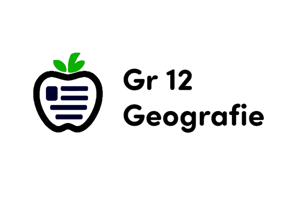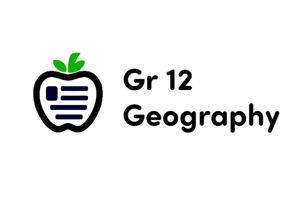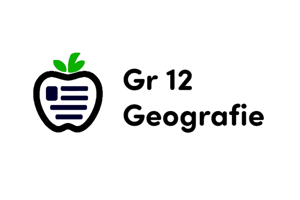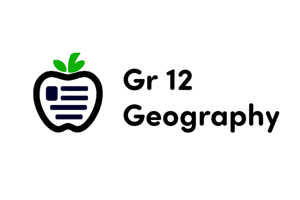Podcast
Questions and Answers
What is the primary purpose of the .SBN and .SBX files in a shapefile?
What is the primary purpose of the .SBN and .SBX files in a shapefile?
- To provide a graphical representation of data
- To store demographic data
- To optimize spatial queries and reduce loading times (correct)
- To describe the encoding of the shapefile
How often is data collected by the American Community Survey (ACS)?
How often is data collected by the American Community Survey (ACS)?
- Every decade
- Every month
- Every two years
- Every year since 2005 (correct)
What is included in the types of topics covered by the ACS?
What is included in the types of topics covered by the ACS?
- Only housing and employment data
- Social, demographic, economic, and housing topics (correct)
- Health and environmental data
- Only demographic and economic data
Which of the following describes the data collection process for the ACS?
Which of the following describes the data collection process for the ACS?
What happens if a shapefile does not have a .CPG file?
What happens if a shapefile does not have a .CPG file?
When are the ACS data typically released?
When are the ACS data typically released?
Which statement about NHGIS is correct?
Which statement about NHGIS is correct?
What is the difference between the ACS and the Decennial Census?
What is the difference between the ACS and the Decennial Census?
What type of data is described as non-numerical and includes characteristics like names and colors?
What type of data is described as non-numerical and includes characteristics like names and colors?
Which step is NOT part of the Spatial Data Science Process?
Which step is NOT part of the Spatial Data Science Process?
What is an important step for ensuring success in data governance according to the content?
What is an important step for ensuring success in data governance according to the content?
Which of the following represents a characteristic of GeoDesign problems?
Which of the following represents a characteristic of GeoDesign problems?
Which of the following represents one of the four operational pillars of data governance?
Which of the following represents one of the four operational pillars of data governance?
What is NOT a component of Data Science as mentioned in the review?
What is NOT a component of Data Science as mentioned in the review?
What should organizations focus on to gain support for data governance?
What should organizations focus on to gain support for data governance?
What is one of the six questions addressed in GeoDesign problems regarding how the context functions?
What is one of the six questions addressed in GeoDesign problems regarding how the context functions?
Starting a backlog and keeping track of content for a data governance literacy program is part of which overall strategy?
Starting a backlog and keeping track of content for a data governance literacy program is part of which overall strategy?
Which of the following best encapsulates the purpose of Geodesign as described?
Which of the following best encapsulates the purpose of Geodesign as described?
In the Spatial Data Science Process, which step focuses on conveying information for decision-making?
In the Spatial Data Science Process, which step focuses on conveying information for decision-making?
Which approach to data governance is considered more modern and supportive?
Which approach to data governance is considered more modern and supportive?
What role does identifying data lineage play in data governance?
What role does identifying data lineage play in data governance?
What aspect of the context does the question 'Is the context working well?' address?
What aspect of the context does the question 'Is the context working well?' address?
Why is it important to break down data governance tasks into smaller, iterative work efforts?
Why is it important to break down data governance tasks into smaller, iterative work efforts?
What is the primary tool for accessing data from the American Community Survey?
What is the primary tool for accessing data from the American Community Survey?
What is a primary benefit of improving data quality in governance efforts?
What is a primary benefit of improving data quality in governance efforts?
Which of the following tools is designed for users looking for statistics about specific geographic areas?
Which of the following tools is designed for users looking for statistics about specific geographic areas?
What does TIGER stand for in the context of Census Bureau data?
What does TIGER stand for in the context of Census Bureau data?
Which TIGER product allows users to visualize spatial data online?
Which TIGER product allows users to visualize spatial data online?
What type of data do TIGER/Line Shapefiles primarily provide?
What type of data do TIGER/Line Shapefiles primarily provide?
What essential aspect of geographic data should users consider when comparing year-to-year data?
What essential aspect of geographic data should users consider when comparing year-to-year data?
Which of the following statements accurately describes the data contained in TIGER products?
Which of the following statements accurately describes the data contained in TIGER products?
What type of data can users access through the Application Programming Interface (API) offered by the Census Bureau?
What type of data can users access through the Application Programming Interface (API) offered by the Census Bureau?
What is the primary purpose of using a map along with another chart in data visualization?
What is the primary purpose of using a map along with another chart in data visualization?
When designing a dashboard, where should the most important view be placed?
When designing a dashboard, where should the most important view be placed?
What is the recommended maximum number of colors or shapes to use in a single view of a dashboard?
What is the recommended maximum number of colors or shapes to use in a single view of a dashboard?
What is a bullet chart best used for?
What is a bullet chart best used for?
What should be avoided to prevent view overload in data visualization?
What should be avoided to prevent view overload in data visualization?
Which layout is suggested for filters in a dashboard for better organization?
Which layout is suggested for filters in a dashboard for better organization?
What is the recommended structure for views with chained interactivity in a dashboard?
What is the recommended structure for views with chained interactivity in a dashboard?
Why should multiple dashboards be considered in data visualization?
Why should multiple dashboards be considered in data visualization?
Flashcards are hidden until you start studying
Study Notes
Data Science
- Spatial Data Science is a multidisciplinary field that uses geographic principles and data to analyze, understand, and interpret spatial information
- Data is any information that can be collected and analyzed.
- Qualitative Data is descriptive, non-numerical, and deals with characteristics, qualities, or attributes. Examples include names, colors, textures, and descriptions.
- Quantitative Data is numerical, represents quantities or measurements, and can be further divided into:
- Discrete Data: has distinct values, like income classes
- Continuous Data: has measurable values, like temperature
- Data Science is a multidisciplinary field that encompasses several stages:
- Data Collection and Preparation
- Data Analysis and Exploration
- Data Visualization
- Machine Learning and Predictive Modeling
- Big Data Analytics
- Spatial Data Science Process involves five steps:
- Data Collection
- Data Engineering and Integration
- Modeling and Scripting
- Analytics
- Visualization, Storytelling, and Sharing
Geodesign Framework
- Geodesign is conceived as an iterative design method that uses stakeholder input, geospatial modeling, impact simulations, and real-time feedback to facilitate holistic designs and smart decisions.
- GeoDesign problems typically involve six key questions
- How should the context be described? (Data)
- How does the context function? (Knowledge)
- Is the context working well? (Values)
- How might the context be altered? (Data)
- What differences might the changes cause? (Knowledge)
- How should the context be changed? (Values)
Shapefiles
- Shapefiles are a geospatial data format used for storing geographic features like points, lines, and polygons.
- Mandatory files for shapefiles include:
- .shp: The main data file
- .shx: Index file to speed up data access
- .dbf: Attribute table for storing non-spatial data
- Optional files for shapefiles include:
- .sbn and .sbx: Spatial index files to optimize spatial queries for faster loading times.
- .prj: Projection file to define the coordinate system
- .cpg: Code page file to describe the encoding applied to the shapefile.
American Community Survey (ACS)
- ACS provides local statistics on critical planning topics such as age, children, commuting, education, and employment.
- Data collection:
- A household sample of 3.5 million addresses is surveyed each year.
- Data is collected through the Internet, mail, and in-person visits.
- Data collection for each monthly panel takes place over a three-month period.
- Data release:
- Data is typically released one year after it is collected.
- Supplemental estimates are simplified versions of the ACS tables.
- Frequency: The ACS is conducted every month and the data are released every year.
National Historical Geographic Information System (NHGIS)
- NHGIS provides easy access to summary tables and time series of population, housing, agriculture, and economic data, along with GIS-compatible mapping files.
- Coverage: Data is available from 1790 to the present for all levels of U.S. geography.
- Important Note: Geographic boundaries sometimes change while GEOIDs remain the same. Make sure you are comparing comparable data across time periods.
Data.census.gov
- Data.census.gov is the Census Bureau's primary tool for accessing data from the American Community Survey (ACS), the decennial census, and other Census Bureau data sets.
- My Congressional District and Census Business Builder are specialized tools that provide users with quick and easy access to statistics.
TIGER Data and Products
- TIGER products are spatial extracts from the Census Bureau's Master Address File (MAF)/TIGER database (MTDB) and are designed for use with GIS software.
- Data content: TIGER products include features like roads, railroads, rivers, and legal/statistical geographic areas.
- TIGER products:
- TIGERweb: A web-based system that allows users to visualize TIGER data online or stream it to mapping applications.
- TIGER/Line with Selected Demographic and Economic Data: Geodatabases (or shapefiles for some 2010 Census data) joined with selected attributes from the census and ACS.
- TIGER/Line Shapefiles: Provide legal boundaries, roads, address ranges, water features, and more for linking to demographic data using GEOID.
- TIGER/Line Geodatabases: Spatial extracts from the Census Bureau's MTDB.
Data Visualization Best Practices
- Geospatial data requires specialized chart types like maps and stacked bar charts.
- Maps are often best when paired with other charts to give more information.
- Emphasize important data: Put the most important variables on the X and Y axes. Less important data can be represented with color, size, or shape.
- Legibility: Rotate views to fit long labels when necessary.
- Organization: Use bullet charts to visually compare actual and target numbers.
- Avoid overloading: Break down views into smaller multiples, limit colors and shapes, and use interactive views only when necessary.
Data Governance
- Data Governance Literacy is about training and upskilling key roles in data governance.
- Four Pillars of Data Governance:
- Increasing data usage
- Improving data quality
- Identifying data lineage
- Ensuring data protection
- Modern approach to data governance: Focus on increasing data usage to drive support for data governance initiatives and gain value from data assets.
- Data stewards:
- Existing data stewards can provide insights on skills needed.
- New data stewards can highlight their learning needs for success.
- Data owners offer valuable perspectives on success.
- Data Governance Literacy Program:
- Start a backlog to track content for training.
- Develop a checklist for desired content.
- Break down work into smaller efforts and review with stakeholders.
- Prioritize the backlog.
- Disrupting Data Governance:
- Increasing usage: Drive support for data governance by demonstrating value and increased utilization.
- Improving quality: Boost trust by focusing on data quality efforts, as most organizations struggle with this.
Studying That Suits You
Use AI to generate personalized quizzes and flashcards to suit your learning preferences.




